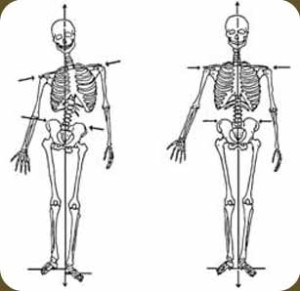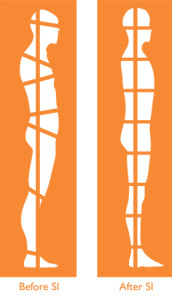As some of you know, I spent the last two weeks of the summer in Maine studying under Tom Myers of Anatomy Trains. Tom Myers created KMI (Kinesthetic Myofacial Integration) which is a form of structural integration. I will be heading back to Maine this fall for additional training. I wanted to fill my readers in on what structural integration is and why I’m choosing to learn this method of bodywork. My hope is that over the course of the next several months, I will be gradually expanding my practice to offer bodywork alongside personal training and fitness instruction. It’s a really exciting career move for me and I’m eager to share it with my clients because I believe so strongly in its benefits.
Structural integration is a type of bodywork that focuses on the connective tissue, called fascia, of the body. Fascia is everywhere in us. It surrounds muscles, blood vessels, organs, nerves, and binds some structures together. It allows for groups of muscles to slide smoothly over and alongside one another. Fascia looks and feels like a web-like structure. It is designed to be elastic and move freely. It helps keep the body resilient by helping us constantly remodel and reshape it as needed. Fascia is like the ‘stretch’ in Stretch-Armstrong!
However, fascia is not indestructible. Poor lifestyle patterns, injury, stress, harmful repetitive movements, and aging can cause fascia to lose its elasticity. It becomes shorter, tighter, and more dense. When the fascia loses its elasticity, it pulls our muscles, ligaments, tendons, and skeleton out of proper alignment. Over a period of time, this will cause pain, discomfort, inefficient movement, poor posture, and overall fatigue. Structural integration is a method that acts to lengthen, recirculate, and soften the fascia to restore the fascia’s plasticity and freedom of movement. Over time fascial manipulation helps to reinstitute postural balance, ease of movement, and a feeling of being more at home in your own body.
Structural integration is performed by a Board Certified Structural Integrator. A Certified Structural Integrator has undergone several SI treatments and studied anatomy thoroughly. They have also completed hundreds of hours of supervised practice prior to receiving their certification. Structural Integration is a method performed in a series of sessions. The idea being that the body “unwraps” in a formulaic way. Sessions usually start either from the top down or the bottom up, depending on each individual’s anatomy. Sometimes you’ll start on somebody’s feet, or maybe their neck. Approaches to go about the recipe are all circumstantial. At times the work starts deeper, and other times more superficially, it all depends on where your body is.
Practitioners work the lateral body, as well as the superficial “sleeve” of the body. Eventually you progress to deep core and abdominal work, as well as cranial and sacral work. Sessions last 75-90 minutes, and involve engagement from both parties. What I mean is, I may be working on you, but once I “hook” some tissue, it’s likely that I’ll call for a movement of some kind. This way it keeps you a part of the process and engaged in the learning process. Initial assessments involve body reading, a time where your practitioner evaluates your body from multiple angles. The strokes used on the table are all about moving and unsticking fascia and getting it it to move in the direction it resists the most. This differes from rudimentary massage because we are not only working muscles and joints, but we are working the fascia that encapsulates nerves, organs, tendons, and other tissues.

After one session you’ll experience more openness within your body. You may feel that some tissues are longer and some joints feel more spacious. For me, I get a sense of feeling lifted off my joints and feeling more aligned in my body in gravity. If you’re training, you’ll certainly notice improved performance and positions, and may even do something you’ve never done before ( like a new personal record!) More than one session is recommended because the lasting effects are temporary, and everybody’s body reverts back at different times. The intention of multiple sessions is to rehydrate the tissue so that the work can last a lot longer of a time, even permanently.
The idea to diversify my skill set and offer bodywork to my PT clients came after many years of receiving bodywork and becoming increasingly aware of the benefits it’s had on my training. The power of someone else’s touch spoke to me in a way that exercise didn’t. As a trainer and athlete, I’ve put a lot of wear and tear on my body. A few years ago, I began seeing a structural integrator on a regular basis. We developed a strong relationship together and I’ve continued to work with him to this day. It was a savior for me, to have someone I trusted with my body, who could make me instantly feel better and move me in a direction where I noticed small and gradual improvements over time.
The accumulation of bodywork that I’ve had has significantly improved my mobility, my movement, and my body awareness. It has helped more evenly distribute my proportions and made me more aware of structural and muscular imbalances. My overall health is significantly improved: I have better circulation through my muscles, digestive tract, and my joints. I sleep better, breathe with greater ease, and also metabolize food more efficiently. I even poop better! Who doesn’t want that!?

